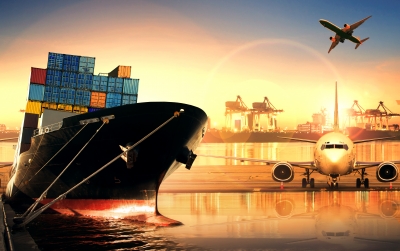Watching news of the aftermath of the string of typhoons that hit the Philippines in the past couple of weeks – and then, news of the magnitude 6.9 earthquake that struck central Visayas, particularly northern Cebu, last week – has got me thinking again about the importance of humanitarian logistics.
I have devoted several columns to talking about how improving our logistics networks would be of huge help in delivering aid to Filipinos badly affected by natural calamities. Yes, roads and bridges will be destroyed by typhoons and earthquakes, and ports will be heavily congested as aid rushes in from all over the country. But properly-identified alternative routes could ease the pressure and bring goods to those that need them much earlier, for one. Also, identifying facilities that are ideal for pre-positioning aid – meaning, they’re accessible to those that need it, and are less likely to be destroyed or disrupted by calamity – is also key.
Beyond infrastructure, it is also important that the people making these decisions – before a disaster strikes, ideally – are capable and knowledgeable.
This means ensuring strong visibility of key routes and ports, and a sense of what may be needed not just for immediate relief, but for faster recovery. Humanitarian logistics does not just concern moving food to those affected, but also moving supplies and equipment key for restoring essential services like power, water and communications.
But my perspective is in the immediate aftermath of a disaster, admittedly informed by my time working with the Pilipinas Kontra Gutom initiative at the height of the pandemic. Delivering food to isolated communities is essential. I am also happy to note, once again, that the government has made strides in improving this access, primarily through the Department of Social Welfare and Development’s continued investment in standardizing the family food packs they produce – it also has the benefit of removing the decision-making from the hands of local politicians keen to promote themselves – as well as in building facilities that can produce and store such items.
That said, the DSWD admits that their resources remain limited. I am not sure of the progress of their planned logistics facility just outside Butuan City, to complement existing ones in Pasay and Mandaue. But more importantly, their logistics transport fleet is limited; understandably they rely on other branches of government, like the military and local governments, to move their relief goods to communities that need them the most.
Investment in physical facilities and equipment will, of course, take time. But steps can be taken now to further improve our disaster response from a logistical standpoint. In the short-term, the government can leverage the expertise and network of the private sector. But more permanent solutions should also be put in place. As we have seen in every calamity, we can’t rely on one thing over and over, lest when those systems are affected, we’ll be left like headless chickens running all over.
In my view, this means the government should improve the facilities it already has, while investment in more dedicated facilities continues. Say, where are we pre-positioning our relief goods before a strong storm hits? In the Philippines, some still think of “warehouses” as just a big stockroom, where everything is stored on the floor and left to the elements.
Perhaps storage facilities run by local governments and regional offices can be upgraded so that they can store more items? Not to mention, if floodwaters enter, for example, those stacked in higher places won’t be affected.
It’s also worth noting the government is increasing investment in cold storage facilities, led by the Department of Agriculture. Apart from just storing produce for selling, we can use these facilities as further “forward stock” locations for food items a ravaged community may need in the medium-term. Maybe we should also explore new “mobile” cold storage solutions for smaller government warehouses and stockrooms.
Finally, if the decision to build a new warehouse is made, we should make sure they are not just up to code, but adhere to principles of seismic design and proper flood mitigation. It will cost more, but it is a necessary expense.
Redefining outdated notions of important parts of our logistics networks – I don’t necessarily mean advanced technologies, but more efficient equipment and facilities to increase capacity and resilience – could help bolster ongoing efforts to better capacitate the government in humanitarian logistics. Every little bit helps in times of calamity.
The pictures I have seen from Bogo so far have been distressing, and reminds me both of the chaos in Cebu City in the weeks after the Bohol quake of 2013, as well as the possibilities of the Big One striking Metro Manila. A perfect reminder, if any, that preparation is always, always, key.
Henrik Batallones is the marketing and communications director of SCMAP, and editor-in-chief of its official publication, Supply Chain Philippines. More information about SCMAP is available at scmap.org.
PREVIOUS COLUMN: A Series of Marathons






